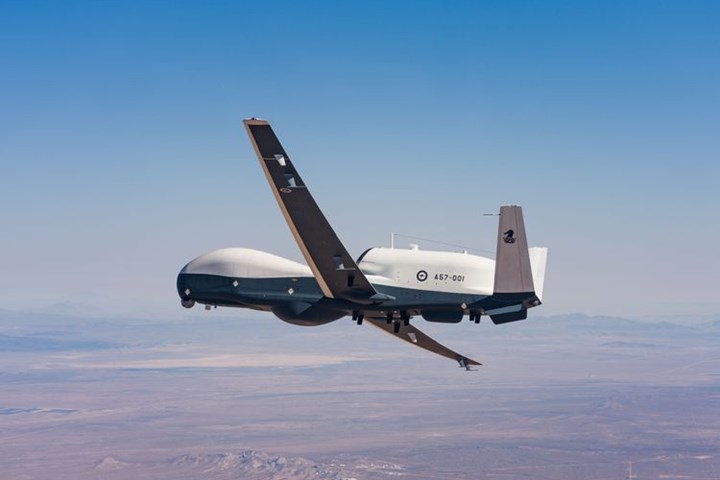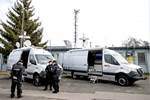Northrop Grumman MQ-4C Triton achieves successful first flight in Australia
Multi-intelligence uncrewed aircraft enhancing Australia’s maritime surveillance.

Photo Credit: Northrop Grumman
Northrop Grumman Corp. (Palmdale, Calif., U.S.) has achieved a significant breakthrough with the successful completion of the inaugural flight for Australia’s multi-intelligence MQ-4C Triton uncrewed aircraft. This milestone flight occurred on Nov. 9 at the Palmdale Aircraft Integration Center in California as Northrop Grumman advances toward the delivery of Australia’s first Triton in 2024.
Designed for deployment by the U.S. Navy and Royal Australian Air Force, the MQ-4C Triton is an uncrewed, high-altitude, long-endurance aircraft dedicated to persistent maritime intelligence, surveillance, reconnaissance and targeting. According to navaltechnology.com, the MQ-4C Triton has an aluminum fuselage, while its V-tail, engine nacelle and aft fuselage are made of composite materials.
Taking off at 11:56 a.m. PST, the maiden flight lasted approximately 6 hours and 24 minutes, encompassing crucial airworthiness evaluations, including engine, flight control and fuel system checks, as well as fundamental aircraft handling tests.
In a recent announcement by the Australian government, the addition of a fourth aircraft to their fleet further bolsters resilience and amplifies superior surveillance capability, ensuring continuous monitoring and safeguarding of Australia’s maritime interests around the clock.
Air Marshal Robert Chipman, chief of the Royal Australian Air Force, highlights Triton’s pivotal role, stating, “Triton expands Australia’s intelligence, surveillance and reconnaissance capability by providing reliable real-time intelligence and situational awareness. Persistent surveillance enables better planning, greatly enhancing joint military responses and operations.”
The MQ-4C Triton uncrewed aerial system achieved the U.S. Navy’s declaration of initial operating capability (IOC) on Aug. 3, 2023.
Australia’s involvement in the Triton cooperative program has been instrumental in shaping its system requirements. Collaboration between U.S. and Australian defense forces will enable the sharing of data collected by their respective Tritons.
Australia faces diverse security challenges, ranging from humanitarian and disaster relief to the monitoring of vital sea lanes in the Indo-Pacific. With all four Australian Tritons progressing according to production schedules, these systems will play a vital role with sensors and communication nodes facilitating data transfer across warfighting domains and various mission needs.
Related Content
-
“Structured air” TPS safeguards composite structures
Powered by an 85% air/15% pure polyimide aerogel, Blueshift’s novel material system protects structures during transient thermal events from -200°C to beyond 2400°C for rockets, battery boxes and more.
-
TenCate Advanced Armour renamed to Integris Composites
With its rebranding, Integris maintains the ability to develop, test and manufacture ballistic armor and survivability solutions while expanding into new markets where composite solutions can be advantageous.
-
Hypersonix receives CMC scramjet manufacturing demonstrator
HTCMC component demonstrates manufacturing of future Spartan scramjet engine required for reusable hypersonic vehicles capable of up to Mach 12 flight.
















